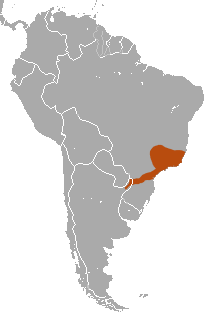| Long-nosed short-tailed opossum [1] | |
|---|---|
 | |
| Scientific classification | |
| Kingdom: | Animalia |
| Phylum: | Chordata |
| Class: | Mammalia |
| Infraclass: | Marsupialia |
| Order: | Didelphimorphia |
| Family: | Didelphidae |
| Genus: | Monodelphis |
| Species: | M. scalops |
| Binomial name | |
| Monodelphis scalops (Thomas, 1888) | |
 | |
| Long-nosed short-tailed opossum range | |
The long-nosed short-tailed opossum (Monodelphis scalops) is an opossum species in Argentina and Brazil.
